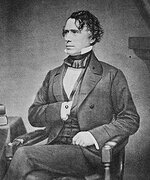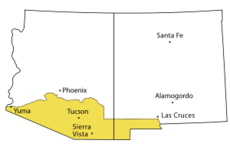L.C. BAKER
Silver Member
As you already know, President Franklin Pierce was openly accused of belonging to the K.G.C. by William Henry Seward. It was even published in news papers. It was put off by the " U.S. House of Representatives as a hoax and the charges by Secretary of State Seward were dismissed.
We can now without a reasonable doubt, link The 14th president of the United States,Franklin Pierce and his Secretary of War Jefferson Davis ( future president of the C.S.A. )to a known K.G.C. spy and another "Copperhead" holding office in 1859. This link is supported by hard evidence that the four men involved were in fact Knights of the Golden Circle.
L.C. BAKER

We can now without a reasonable doubt, link The 14th president of the United States,Franklin Pierce and his Secretary of War Jefferson Davis ( future president of the C.S.A. )to a known K.G.C. spy and another "Copperhead" holding office in 1859. This link is supported by hard evidence that the four men involved were in fact Knights of the Golden Circle.
L.C. BAKER

Last edited:


 I don't buy that for one minute.
I don't buy that for one minute.



